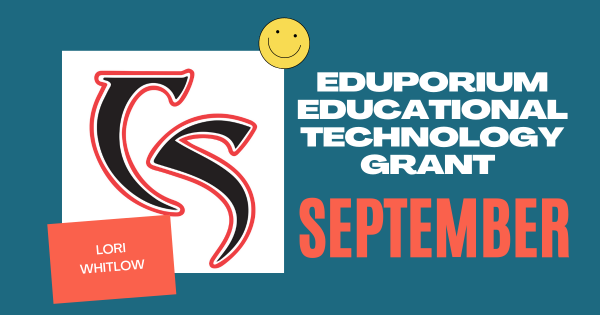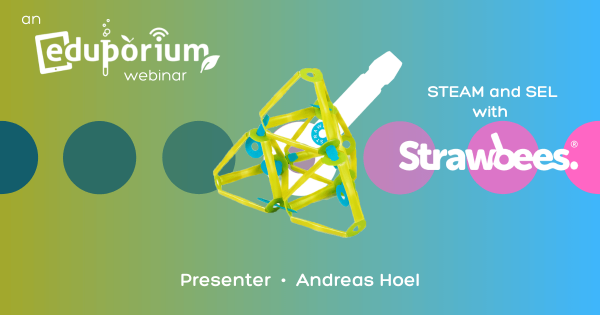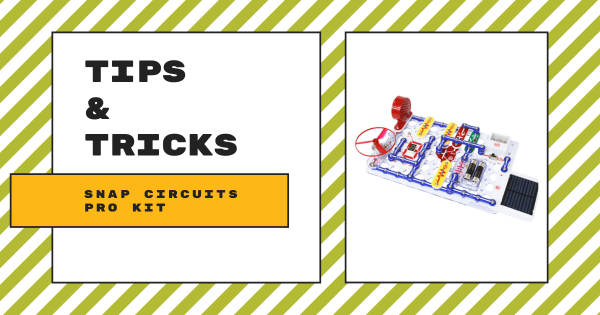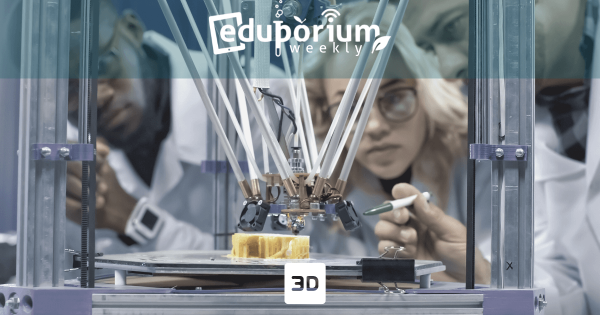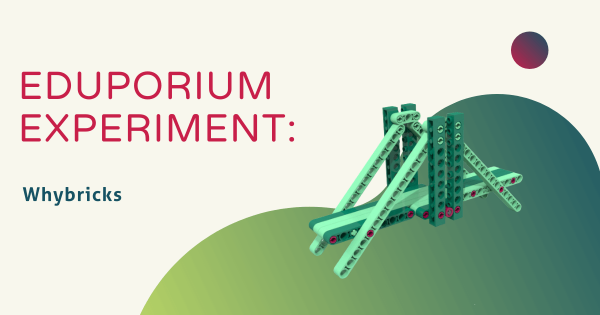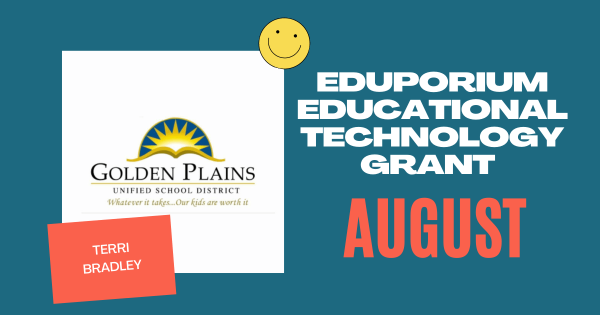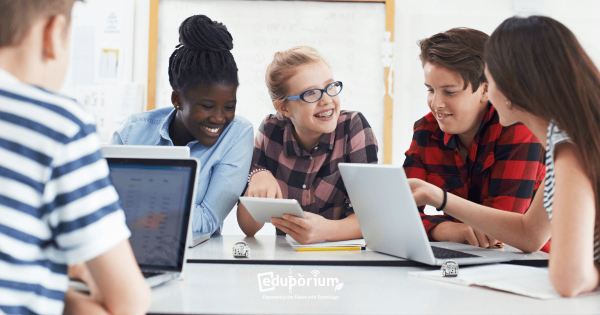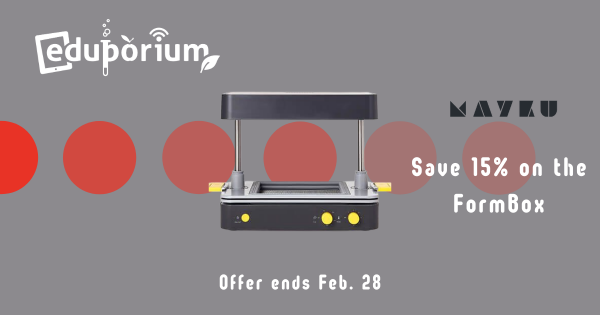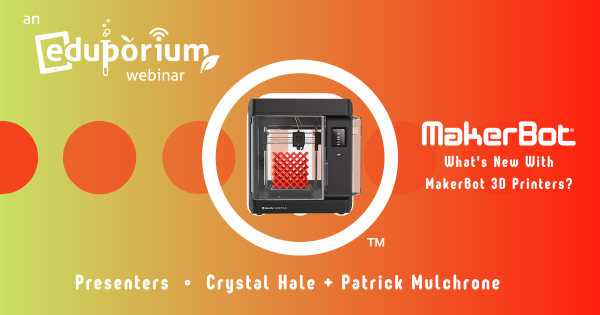Lori wants to give her unique children an opportunity to partake in student-centered, accessible, and collaborative learning opportunities, which mesh perfectly with maker education. In fact, she’s even thinking about modeling this space after a college library or maker studio to really help create much more of a real-world feel for all of her students.
Maker Ed
Maker Ed has rapidly evolved into a big and important component of 21st century learning. Born out of the culturally impactful Maker Movement, maker education involves providing students with opportunities for hands-on construction, investigation, problem solving, collaboration, and more—all with this community-centric approach. In Maker Ed, students often excel with new types of opportunities to showcase their skills or to develop new ones. With so many potential projects to work on in the classroom or in school makerspaces, adding purposeful, hands-on work to the school day is very effective and inspiring. And, more importantly for educators, there's no wrong way for them to go about introducing maker education. It can be as complex as using various advanced 3D printers or as simple as building with popsicle sticks.
Aside from the likelihood of positively impacting students, Maker Ed is also popular because of its real-world connections. Not only can children further develop key technical skills, maker opportunities also help them to bolster some top soft skills. Making typically involves a lot of collaboration and this is especially true as students move into middle or high school. With unique, fluid opportunities, kids can simultaneously work on bolstering communication, teamwork, and other soft skills in the process. Plus, whether they are using classroom 3D printers, CNC machines, or even low-tech tools, they'll grasp a better understanding on using technology for good as well. Some solid product lines across Maker Ed are 3Doodler, MakerBot, LulzBot, Glowforge, and more. With these innovative solutions, students in all grade levels can truly propel their creative acumen.
-
Eduporium Featured Educator: Matthew Strine
For the month of October, we hear from Matthew Strine, who’s a STEM teacher in the Monessen (PA) School District. He’s had the opportunity to impact students through STEM learning and, whether it’s hands-on projects or challenging students to think critically, he certainly understands the importance of relevant learning experiences. -
STEAM and SEL with Strawbees: Join Our Webinar on Sept. 15
This first webinar is scheduled for Wednesday Sept. 15 at 3:30 PM ET. Since SEL (understandably) is very closely tied to students experiencing new emotions and communicating their thoughts, it’s connection to hands-on, exploration-based learning continues to grow. So, we’ll be focusing on how to integrate SEL in the classroom this school year. -
Tips & Tricks | Snap Circuits Pro Kit
If you’re teaching circuitry and want to get hands-on, Snap Circuits is the perfect entry into building circuits for students eight and older. Students can use these pieces to snap building blocks together to form functional circuits and there are none of the safety risks associated with more advanced wiring. Read on to learn more about the Snap Circuits system. -
Eduporium Weekly | Integrating 3D Printing in Education
Today, 3D printing has all sorts of positive implications in many different industries, including medical, science, military, and more. It’s with these innovative machines that anybody can create objects that are precisely crafted to specific needs. By solving challenges with 3D printing, students can get ready for the future and learn some key skills. -
Eduporium Experiment | Lessons On Engineering With Whybricks
The Whybricks kit is very affordable and designed for children as young as eight years old. It ships in an organized box with 2,100 pieces—enough for kids to divide up among as many as 20 of them. The system is built on the premise of using hands-on building blocks to help students develop and it includes both in-depth project guides -
Terri Bradley from San Joaquin ES Awarded August Grant
Once she settles in to the new school year, Terri is committed to advancing STEAM opportunities for her students. She has a number of lesson plans in mind, including challenging students to find similarities and differences in projects each of them design, helping students deepen their understanding of curricular objectives, and boosting SEL strength. -
MakerEd Experiences in Post-Pandemic Education
Trying to look on the bright side, we’ve joined the optimistic crowd in questioning whether this unprecedented period provided educators, administrators, and learning designers with lessons on educational trends and regularities. To us, the yearlong experience of teaching through a pandemic validates the value of MakerEd and EdTech tools. -
Mayku FormBox Vacuum Former on Sale All Month
Designed for MakerEd experiences in Grades 3 and up, the Mayku FormBox helps spark creative product design, on-the-fly fixes, and innovative design thinking. Oh, and it’s on sale now through Feb. 28! Keep reading to find out how to access this limited-time deal on a versatile tool for design and maker education. -
Webinar: What's New with MakerBot 3D Printers?
Creators of some of the most reliable, powerful, and popular 3D printers, the MakerBot name is one of the most respected when it comes to education. In this webinar, they discussed some of the advancements in the 3D printing space, including its role in prototyping and modeling in many different industries. Watch the recording to learn more!




